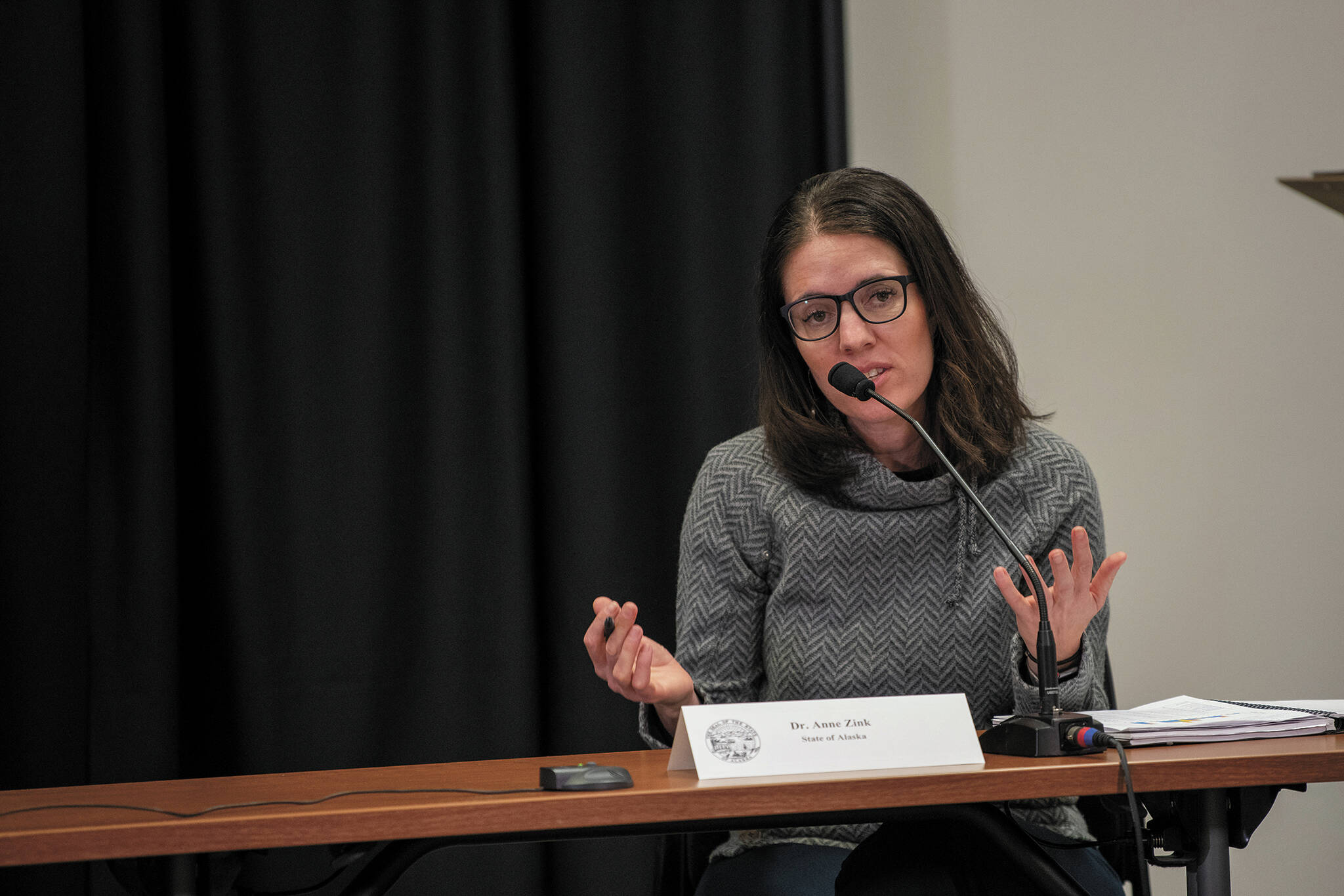As COVID-19 cases are falling in Alaska and nationwide once again, health officials are pondering what other kinds of health implications survivors of the disease will face.
Chief Medical Officer Dr. Anne Zink said during a media briefing last Thursday that many different kinds of viruses can cause long-term health repercussions.
“It’s not uncommon for viruses to cause changes in the immune system, changes in the way that the heart responds, long-term symptoms and side effects, so this is not unique to COVID,” Zink said. “But I think we will be learning for a long time what this looks like, so how this changes life expectancy? I don’t think we have any answer to that question yet.”
According to the Centers for Disease Control, most people who contract COVID get better within weeks of illness. But some can experience post-COVID symptoms four or more weeks after first being infected. Some of those symptoms include difficulty breathing, coughing, issues sleeping, lightheadedness, fatigue and difficulty concentrating, among many others.
Some of the multiorgan long-term consequences can affect the multiple systems in the body, including heart, lung, kidney, skin and brain functions. The CDC also has data showing that some people, mostly children, can experience multisystem inflammatory syndrome, although it’s rare. MIS is a condition where different body parts can become inflamed.
State Epidemiologist Joe McLaughlin said during the briefing Thursday that long COVID doesn’t always only cause physical health issues.
“It also can include mental health issues,” he said.
The findings of a study from the peer-reviewed British Medical Association journal suggest that people who had contracted COVID were at an increased risk for anxiety, depression, sleep and stress and adjustment disorders, as well as substance use disorders.
McLaughlin also said that most long COVID cases occur with people who were severely ill from the virus.
Health officials emphasized Thursday that vaccination is the best way to minimize the impacts of COVID in Alaska — both on an individual level and for the greater community.
According to state data, 63.6% of Alaskans over the age of four had completed their primary COVID vaccine series. Another 26.6% had received a booster.
In the Kenai Peninsula Borough, 48.8% of folks had completed a primary series and 22.9% had received a booster as of Friday.
Those vaccination rates are slowly increasing as Alaska is on the back side of the omicron wave. Cases were down 47% the week of Feb. 11 to 17 compared to the week prior.
Friday, the state reported a two-day combined total of 1,150 new cases sequenced from Feb. 16 to 17. New cases reported Friday included 27 in Soldotna, 18 in Seward, 14 in Homer, four in Sterling, three each in Anchor Point and the Kenai Peninsula Boroughs North and South, and two in Nikiski.
In addition to vaccination, state health officials said multiple approved COVID treatments have high efficacy rates. They include monoclonal antibody treatments, as well as oral antiviral medications.


